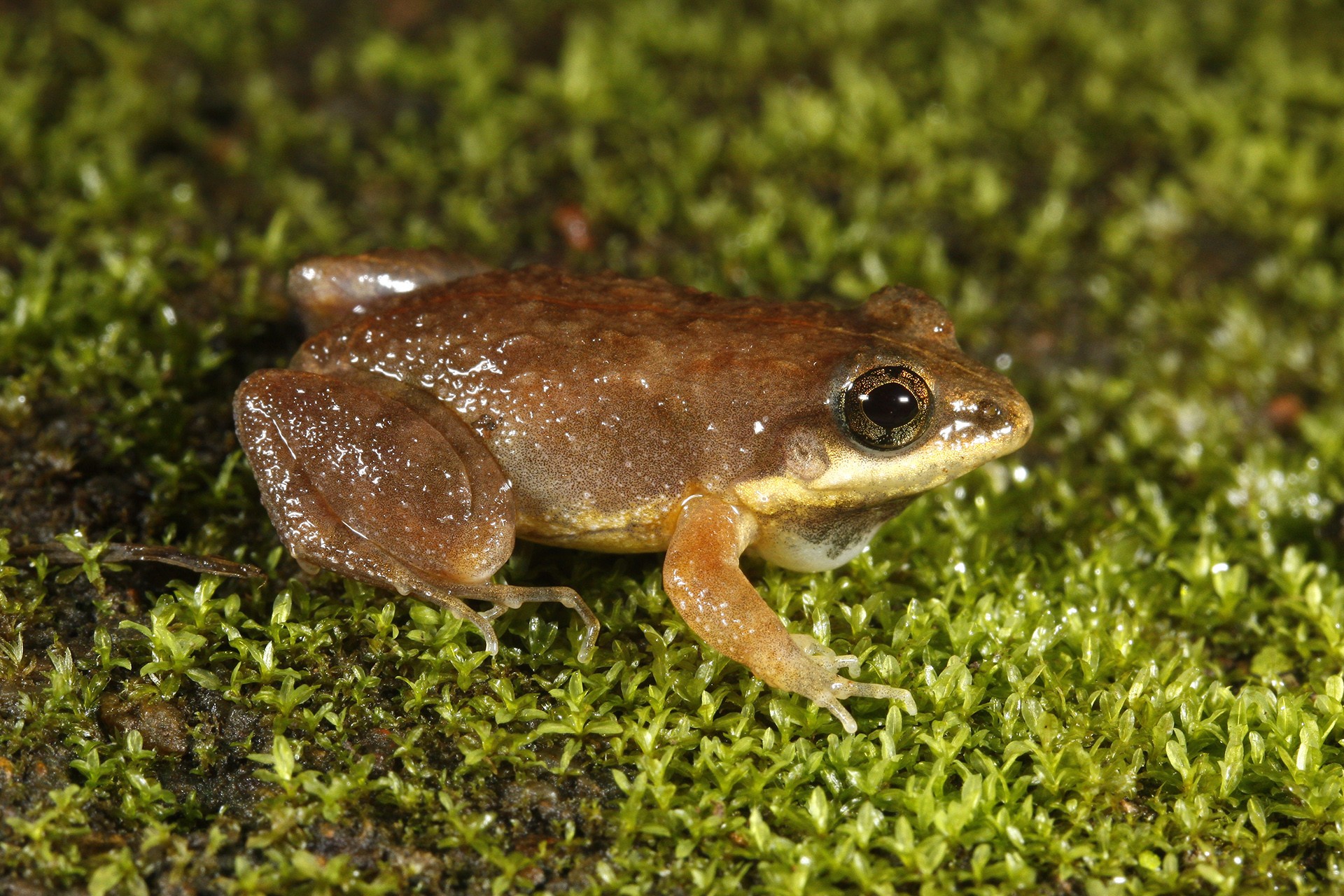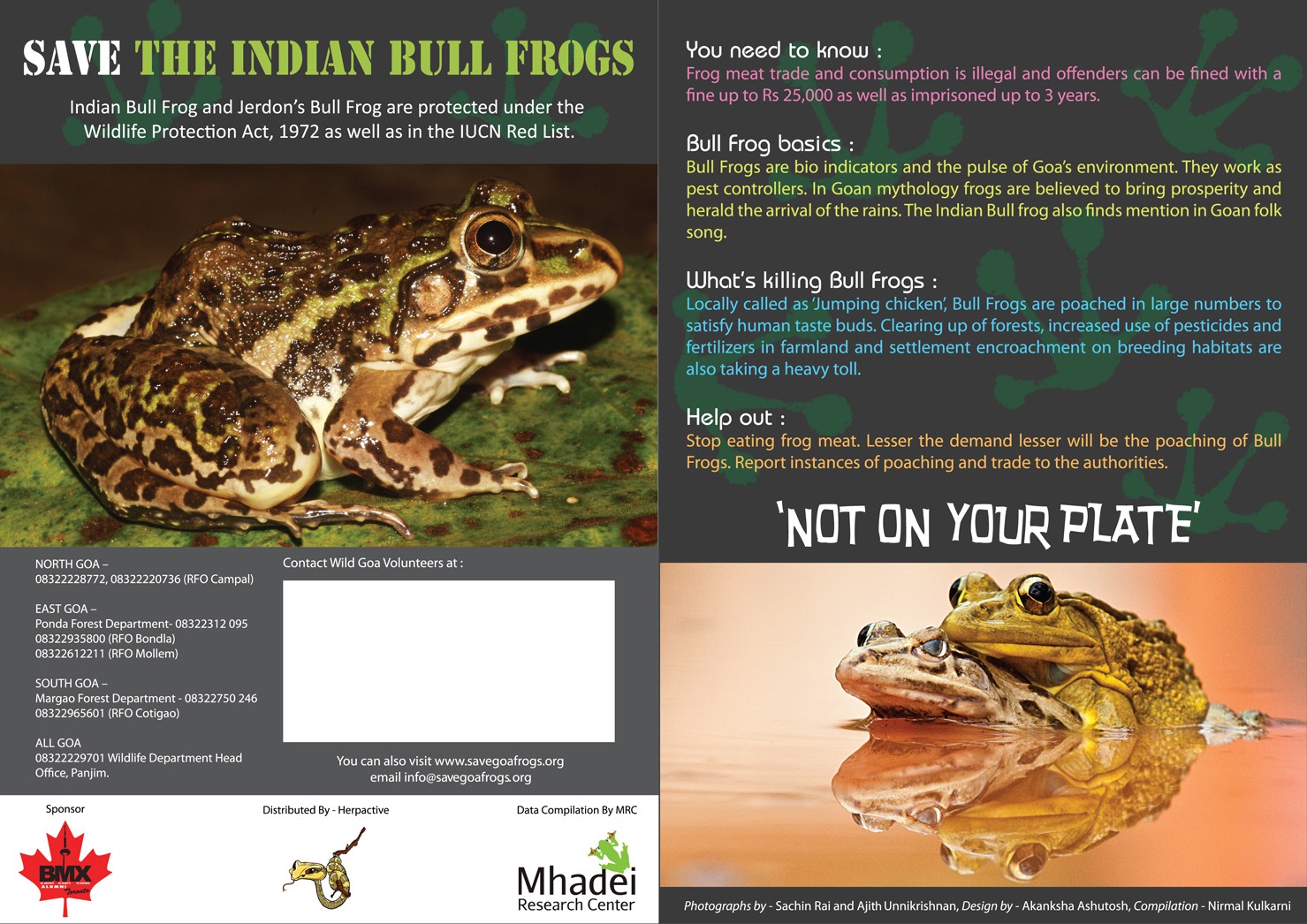It is often said that the tiny coastal state of Goa puts its best face forward in the monsoon. That’s when the sunshine state turns into a verdant wilderness in all shades of green. Its beauty has to be experienced to be believed. It is also the season when amphibians like frogs and toads come out of hibernation to procreate. The Western Ghats, which runs along nearly the entire length of the state, is home to 239 of 405 species of amphibians in India. It’s no surprise then, that the first rains always herald a ritual of croaking, which will go on for as long as the monsoon lasts. But, all is not well for these species. Their croaks, meant to attract a potential mate, are also attracting humans.
Take a drive at night along the green paddy fields of any Goan village, especially in and around Salcete, in South Goa and you might well see a group of men with a sack in one hand, and a torch in the other. Chances are, they are hunting for frogs. Yes, these people are in the business of poaching frogs for their meat. A couple of years ago, I happened to witness this myself.
In Goa, two species of frogs in particular are poached for their meat — the Indian Bull Frog (Hoplobatrachus tigerinus), which is the largest frog species found in India, and the Jerdon’s Bull Frog (Hoplobatrachus crassus). Both are found in cultivated areas and around human settlements, mostly in freshwater wetlands, paddy fields and near permanent water bodies. Frogs from these areas end up as a seasonal monsoon delicacy called ‘jumping chicken’, which is served in some local eateries and village bars in Goa.
In Goa, people tend to prefer eating frogs’ legs as a chilly fry – from what I’ve heard, the meat tastes similar to chicken, but is a little more tender. Sometimes the entire frog is barbequed, or used to make traditional dishes like xacuti or cafreal. There’s also frog meat soup, which is believed to be good for colds and coughs.
Usually, ‘jumping chicken’ is served discreetly. It isn’t listed on menus, but is served to regulars at these restaurants who are aware that frog meat is served here. In other parts of the world, like in France, frogs are as much a part of the national cuisine as, say, chicken or fish, but in India, it is illegal to kill and sell these frogs under Section 9 of the Wildlife (Protection) Act, 1972. The sentence is a maximum of three years in prison.
However, for many locals, frog hunting is an annual ritual that they have taken part in for generations. A young man in his twenties, a resident of Amona village in North Goa, told me on the condition of anonymity: “I go with my friends to catch these frogs from the nearby paddy fields. We get around 10 to 15 frogs and we eat them. For us it is an annual monsoon activity. It’s like how you wait for your birthday for the full year – in the same way, we wait for the first showers in order to get these frogs.”
However traditional the practice, the threat of frog poaching is a serious concern for conservationists. These slimy amphibians may not look attractive to most eyes, and they may not be as popular as an apex predator like the tiger, but these species play an important role in biodiversity. “Frogs worldwide are recognised as the canary in the coalmine as they respond very quickly to subtle changes in temperature. And with climate change at our doorstep, we need to realise that everything around our environment is significant, especially the frogs,” said Clinton Vaz, a wildlife activist.
Frogs are often termed as ‘friends of farmers’, and for an agrarian society like ours, they are assets to be protected. They feed on many insects found in fields, reducing crop loss to pests, and also countering the threat of malaria, encephalitis and other such insect-borne diseases. It is said that a single frog can eat more than its weight (about 200g) in waterborne pests every day.
But, to make the point about their importance clearer, there is a need for more awareness, and luckily in Goa, this awareness is rising. In 2009, a ‘Save The Frog’ campaign was initiated by the Goa Forest Department, with the help of a few wildlife activists, including Vaz. “We’ve been saving frogs from poachers for almost 9 years now. Poachers used to catch frogs openly and in large numbers – sometimes around 100-150 frogs. However, nowadays, we run a lot of awareness before the start of the monsoon season,” said Vaz. Every year, there are social media campaigns, awareness drives in schools, posters placed in public places, and meetings organised in villages to spread the anti-poaching message far and wide.
A lot of citizens come forward and lend their time, skills and energy to this initiative. I, too, became involved in the campaign around the time it was launched, helping to organise talks and quizzes to highlight which frogs are found here and why we need to protect them. Personally, it made me more aware about these species, which we generally take for granted.
The forest department also conducts frequent raids to combat frog poaching. Raids usually take place at night in the paddy fields, or sometimes, directly at the poachers’ homes. A Margao resident was once caught with 60 frogs; another time, a few years ago, a Ponda-based offender was caught with a sack of 70 frogs, which he intended to supply to restaurants.
According to the officials from the Goa Forest Department, this year, the cases of poaching have reduced considerably. Kuldeep Sharma, deputy conservator of North Goa told me that so far in 2017 they reported no cases from North Goa. Anil Shetgaonkar, deputy conservator of South Goa, said that this year they reported only three cases of poaching from South Goa in areas like Arlem (Margao), Kurdi (Sanguem) and Verna. “Poaching has reduced quite a bit this year. We regularly carry out patrolling in the evening starting from 6.30 pm,” he said.
Benhail Antao, a wildlife rescuer from South Goa, agreed that frog poaching is no longer as rampant as it used to be. He said that although a few small eateries and restaurants in south Goa still serve ‘jumping chicken’, now, because of the clampdown, they sometimes smuggle the frogs in from the neighbouring states of Karnataka and Maharashtra. Still, conviction rates in poaching cases are negligible. Antao pointed out that nobody has been prosecuted for frog poaching in the state as yet. “There needs to be conviction in these cases to send a stronger message to poachers,” he said.
For activists like Vaz and Antao, life is not always easy. Many times, they have been threatened and beaten up by poachers they’ve caught red-handed on raids. “At times people think that we are taking the fun out of a traditionally practiced monsoon activity. People have also asked us to prove that frog populations are dwindling. I have even had people throw dead rotting frogs at my doorstep in the middle of the night,” said Vaz.
Many locals will counter that poaching is just one aspect in the decline of frog populations – what about various other factors like habitat destruction, the use of pesticides in fields, climate change, they say. “We don't have any studies yet to prove what is worse than the other, but what we know for sure is that controlling poaching is definitely one of the easier ways to increase frog populations. I would be very happy if somebody else would take up the reduction of pesticides instead of just criticising our activities,” said Vaz.
Of course, other threats to frog populations do exist, and need to be addressed if we are to conserve these species. Ramesh Zarmekar, a wildlife photographer who has documented more than 20 species of frogs in and around Bhagwan Mahavir Wildlife Sanctuary in Goa, said, “There’s a constant threat to these species due to the clearing of forest undergrowth and forest fires. Also, the careless attitude of trekkers who litter water bodies has been damaging.”
Certainly, frog habitat in Goa has been disrupted by the surge in eco-tourism activities during the monsoon. “There has been no formal study on this aspect. But it is a fact that public access to forests, waterfalls and rivers has increased over the last decade, and this has led to garbage accumulation. Also, the opening of pathways in core forest areas, intrusive photography and the diversion of water sources for use in the eco-tourism sector has taken a toll,” said herpetologist and wildlife photographer Nirmal Kulkarni.
Although there is a marked increase in awareness and enforcement, the wildlife community knows that much more needs to be done to curb poaching, and help shape better policies for habitat protection and the protection of amphibians like the Indian bull frog. “What we need now is a combined effort by village level biodiversity management committees, the Forest Department and NGOs,” said Kulkarni.




